It has been some time since my last post. Coursera, the online education system, has absorbed a lot of my time. I can spend 10 to 15 hours a week just on the calculus course with The Ohio State University. Plus I am enjoying Animal Behavior with the University of Melbourne, Australia, and What a Plant Knows with Tel Aviv University. And for an unconventional outlook there is A Brief History of Humankind from the Hebrew University of Jerusalem. Plus I am busy with Fall tasks.
This summer has been good for me – plentiful rains, good food and limited pest issues. My apple trees were bountiful and the Giant Korean pear outperformed everyone else. As the season winds down there are still figs to be picked.
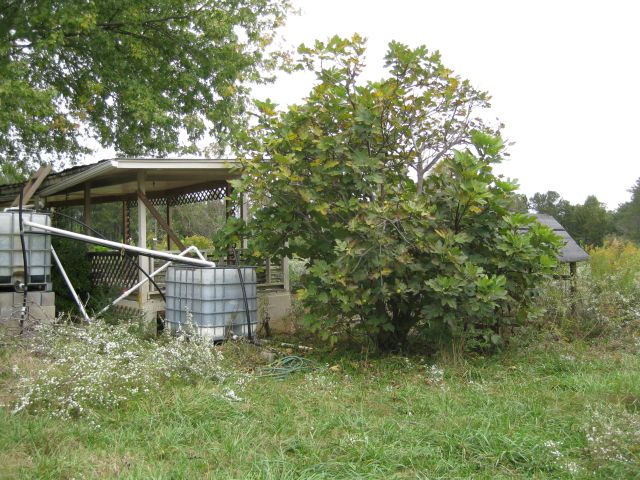
This fig tree is at the top of the hill with 2 small tanks which gravity feed to the plantings. The higher tank provides water for the fig tree level – the pressure is unsatisfactory and I have devised a method using several valves to have the pumps at the base of the hill directly pressure irrigation at the top level. This additional pressure now makes hose watering feasible and I am relocating strawberry and sweet potato plantings to the top of the hill. My first year of sweet potato production was meager but the microwaved sweet potatoes were delicious. I hope to do better next year with more sun at the top of the hill. Below are some of the sweet potato leaves I trenched and will cover later with hay.
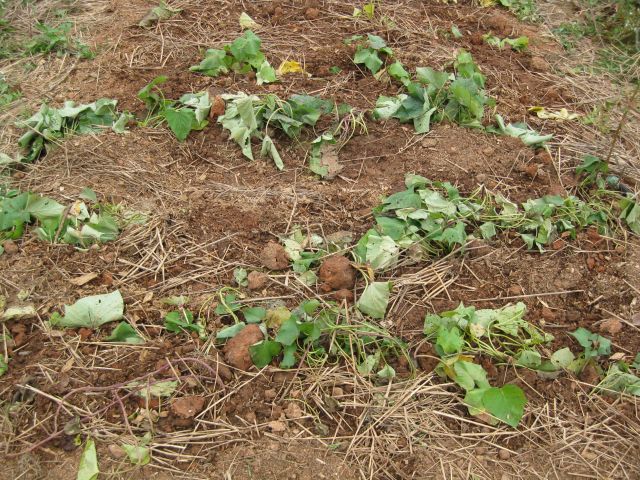
Last weekend was a muscadine pickers delight – one vine was overladen with large delicious scuppernong. I have muscadine at several locations. The best performing are those on the hillside.
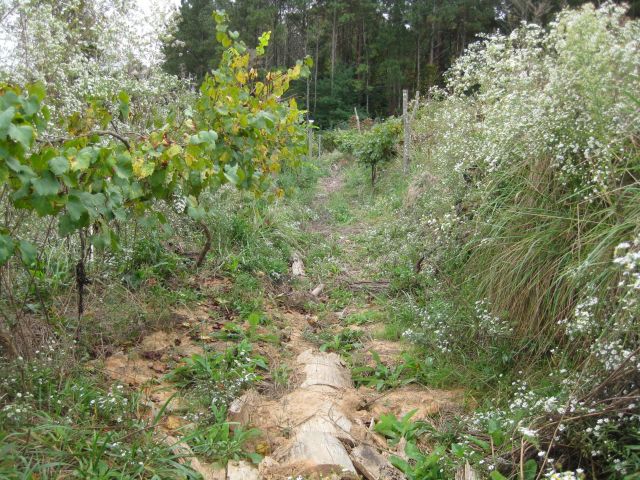
I allow wildflowers to run rampant and now the daisy and goldenrod are filled with my honeybees.

In my vegetable area I am allowing the squash plants to have a last fling – this is the first year I actually had such plants since previously they were leveled by the squash borer. Probably attributable to increased diversity of flowers whose nectar may have attracted borer predators.
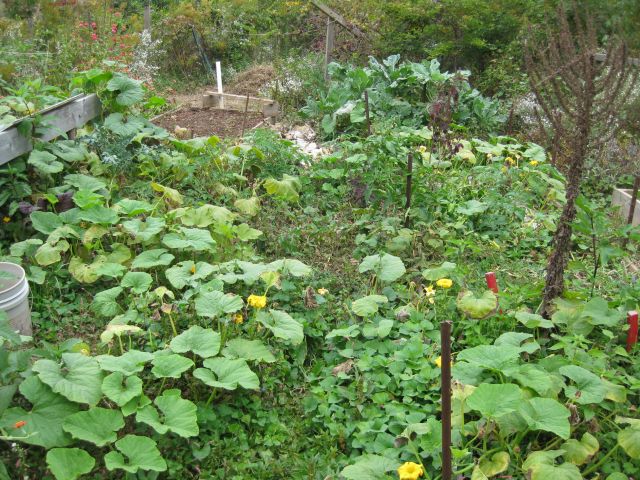
And here is a candidate soon for harvesting.
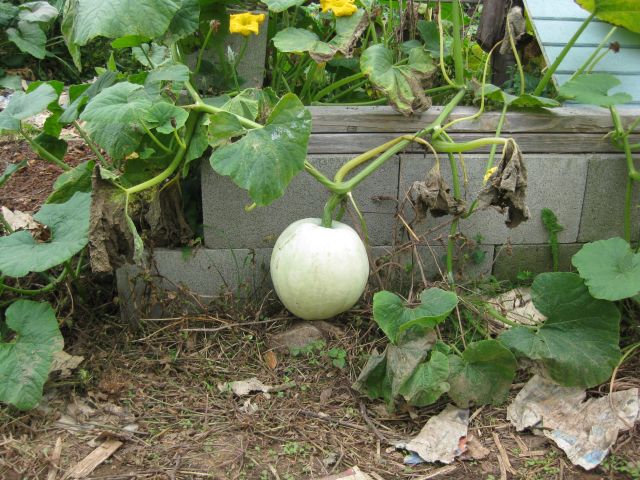
Elsewhere I am clearing raised beds, composting and planting out lots of garlic as well as kale, radish, lettuce etc.
- the bed at the rear has been seeded, the closest bed has been an excellent producer throughout the year probably due to liberal doses of my compost
I have had most success with raised beds though here, alongside the asparagus I am seeding directly into the ground.
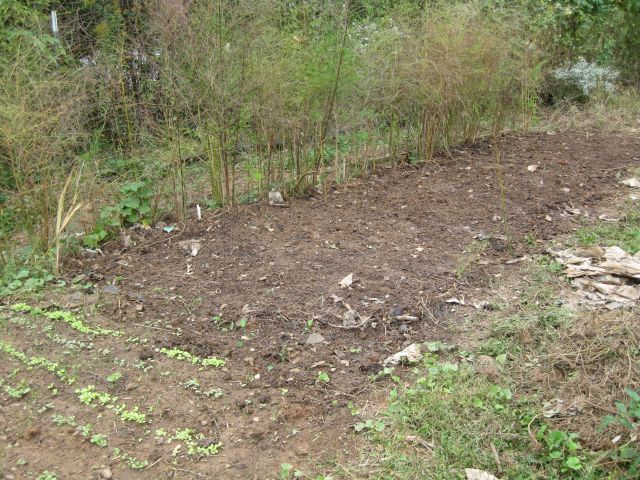
My collard performed well throughout the year. They were healthy and grew strongly and even when attacked by pests there was always some for me.
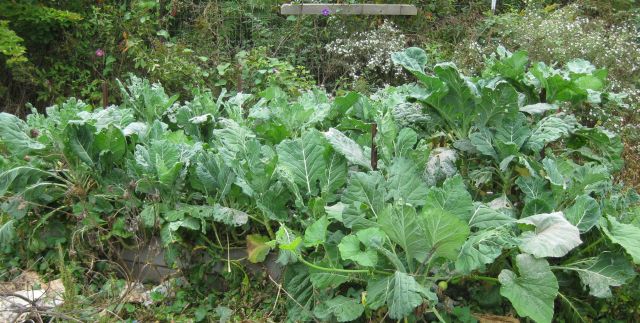
I mentioned my best muscadine was on the hillside. Altho these vines at the base of the hill have produced large grapes they are not tasty. Next year I will prune more severely and feed with lots of compost and stable manure and try again.
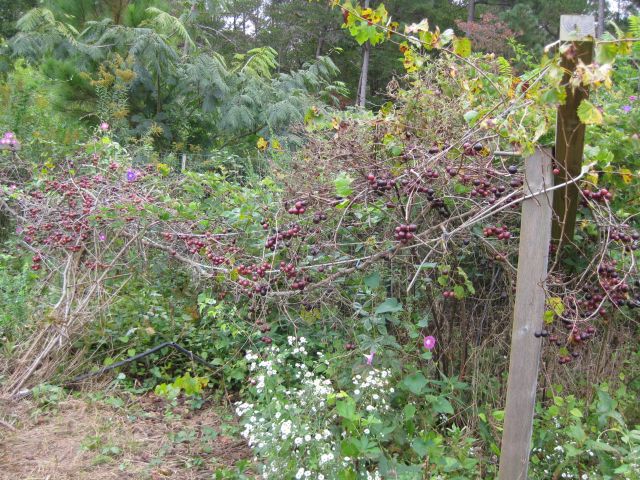
All my chicken are doing well. The four I incubated in June have grown largely, though the hens are not yet laying eggs – may have to wait for the spring. And the young rooster is bigger than his dad, tho he has no spurs (yet) and is somewhat timorous (soon to change, I am sure).
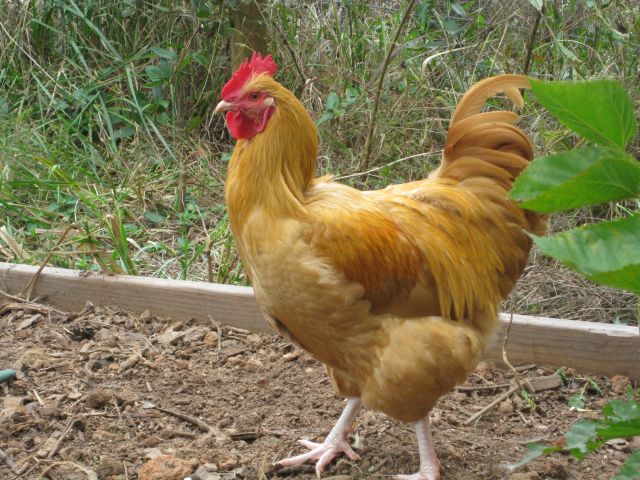
And finally one of my busy unpaid workers on goldenrod.
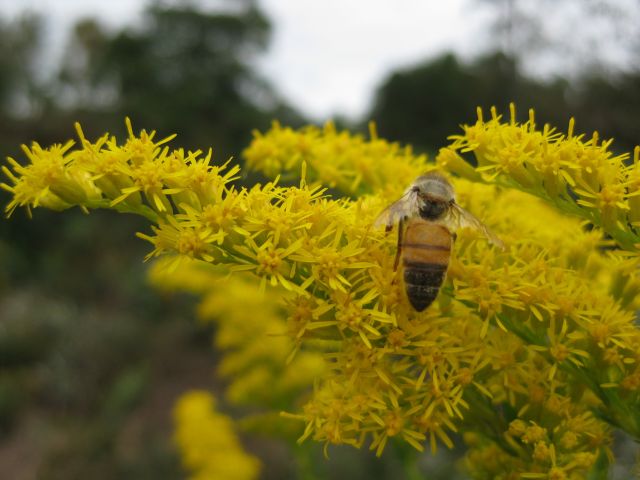
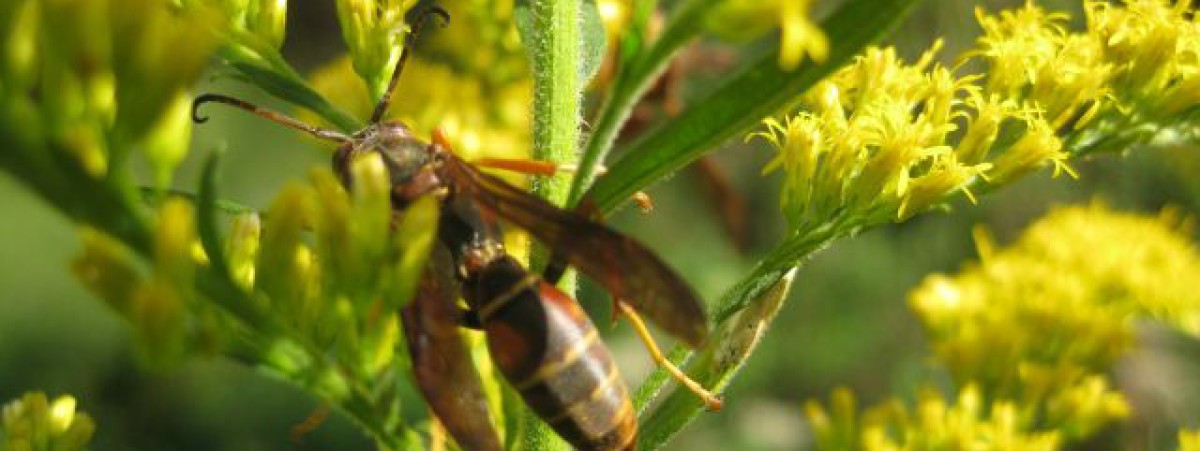
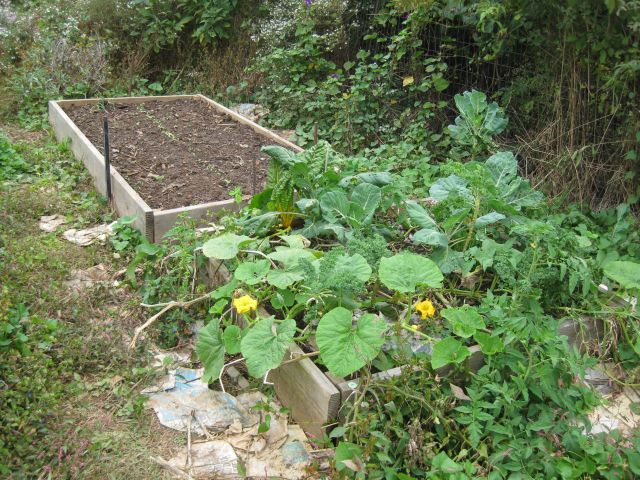
On balance, a good year, I think.
I have planted out various saplings grown from local nuts and in a few years hope for a more foresty look
We’ve been doing something similar but not just with nuts. We have found two things to be very useful in helping the saplings establishing themselves. It seems to take about three years after transplant for the roots to establish themselves. During that time, they seem to have difficulty competing with the surrounding vegetation – mostly golden rod and New England aster here – and grow slowly or are stunted or die. So I scythe around each tree a couple of times a year as needed. We’ve also started mulching heavily after last year’s drought. We didn’t lose anything but it was a close call. Each sapling now has a +6 inch thick deep layer of grass clippings in a 3-5 foot diameter ring. Since this provides wonderful nesting material for mice and voles, we now add tree guards in the fall and take them off in the spring. Besides being a good insurance policy against drought the mulch rots down into compost enriching the soil around each sapling.
Good idea there with the mulching. I lather care on my fruit tree saplings with lots of compost, occasional irrigation and cutting down surrounding vegetation, which I use to mulch the base of the trees. The vegetation competes not only for sunlight but more insidiously for nutrients and I have found “weeds” some distance removed (say 6 feet) which have roots mining my compost. I take a hands off approach for the nut tree saplings in the field area. Are you thinking of an edible forest garden design? I heard a recent interview with Dave Jacke who said achieving viable interactions is more complicated than supposed.